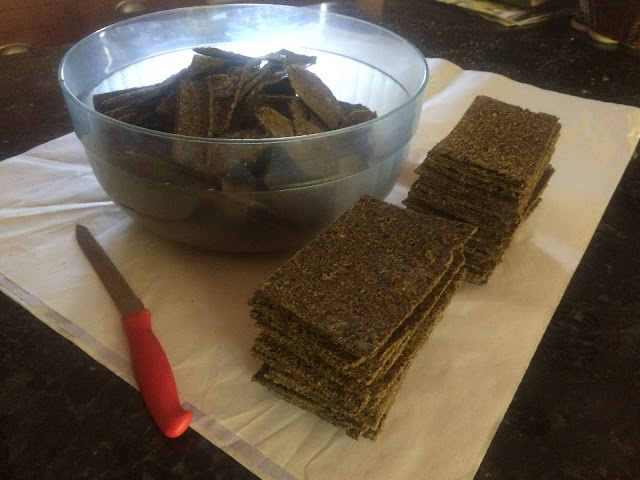After many iterations making vegetable chips, we succeeded in making some that are as good as any commercial chips. My brother gave me the recipe, lent me his food slicer and four batches later I'm an expert. It takes less than an hour to slice five long Zucchino Rampicante squash (Baker Creek Heirloom Seeds) into discs, marinade them in a mixture of:
- 1/2 cup of pureed garlic
- 3 Tablespoons of olive oil
- 2 Tablespoons of cumin
- 1 Tablespoon of smoked paprika
- 1/2 teaspoon of cayenne
- 3 Tablespoons of lemon juice
- (optional) 1 Tablespoon of turmeric
 |
| 102 Ounces of Zucchino Rampicante Squash |
 |
| The Electric Toastmaster Food Slicer Processed Five Squash in 10 Minutes! |
and arrange them on dehydrator sheets. Disc thickness that worked best for me: 1/8 inch. Insure each squash chip is covered in spice and place closely-packed on teflon or silicone sheets on dehydrator trays. I tried placing chips directly on grates but they tend to wrap themselves around the wire - although they do make fancy fluted chips that way (that don't pack well). Dry for 8 hours at 115 F and then flip each one and dry another two hours, or more if they are not yet very crisp. After removing the stem and blossom scar, 100 ounces of fresh squash made 8 ounces of crisp chips! They lost 92% that was water! Both thickness and diameter were greatly reduced so the flat chips easily pack into a quart zip-lock bag.
 |
| Close-packed Squash Slices on Teflon Sheet |
 |
| Same Sheet as Above, After Drying 8 Hours |
 |
| Another Sheet Before Drying |
 |
| Same Sheet After Drying |























































